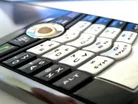FluPhone app could track epidemics

Researchers from the University of Cambridge Computer Laboratory have been working on the FluPhone app in the hope that it will be able to monitor how diseases like flu are spread.
The app uses Bluetooth technology to ‘talk’ to other phones fitted with the FluPhone app and it monitors the number of people that an infected person comes into contact with.
When the mobile phones come into close contact with each other the data is recorded and sent back to researchers.
READ MORE FROM THE WDM CONTENT NETWORK:
To read the latest edition of Exec Digital, click here
Study shows our brains can take ‘naps’
Warnings over alcohol risk
Ibuprofen, aspirin and paracetamol stop Prozac working
“The application in the mobile phone monitors influenza-like symptoms by prompting questions for the mobile phone owner.
It also captures physical proximity information between individuals by recording other devices nearby via Bluetooth communication,” explained Dr Yoneki, a principal investigator of the study.
The team behind the study said that they believe that the data collected could be used to simulate social interaction during an epidemic which would then make it possible to monitor the spread of an epidemic.
Cambridge University is one of seven institutions working on developing the app, and a three month pilot study of FluPhone was carried out in Cambridge last year which coincided with an outbreak of swine flu.
Dr Yoneki said: “The data was a valuable insight into how human communities are formed, how much time people spend together, and how frequently they meet.”
“Such data shows complex network-like structures, which is very useful for understanding the spread of disease.”
Traditionally, epidemiologists monitor the spread of disease by asking patients to keep a diary of all their social interactions.
“That's very heavy-going and people often forget to do it, or forget who they've met," Professor Crowcroft, another principal investigator of the study said.
He said that the FluPhone app was a more reliable way to trace contact between infectious subjects now that the mobile phone market is dominated by Blackberry smartphones and iPhones.
“There are more cell phones than people and in most urban areas network coverage is close to 100%, hence we can get very accurate measurement and sampling of the population,” Crowcroft added.
The study also highlighted how the FluPhone app can provide data that would be otherwise unavailable: “In this particular outbreak it’s now known that some people carried the disease yet were asymptomatic."
"Our system is capable of identifying these asymptomatic ‘superspreaders’ because they show up by virtue of the contacts who develop the disease,” explained Crowcroft.
- Nextiles: the future of wearable technology?Technology & AI
- 5 mins with... Dr Lisa Anderson, ParagonixMedical Devices & Pharma
- NearForm's privacy-first contact tracing app has high uptakeTeleHealth & COVID-19
- Blackberry Launches New Medical Professionals' Smartphone, Google Backs OutTechnology & AI



